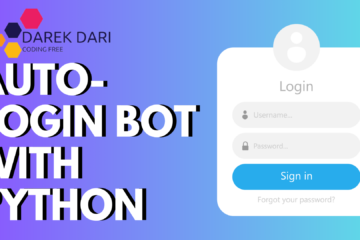
Table of Contents
Are you a Python developer looking to take your skills to the next level? Are you interested in working on a Python project but not sure where to start?
You’re in the right place! In this blog post, we will explore the world of Python project development and provide you with a step-by-step guide on how to create your own Python project with code.
Whether you’re new to Python or a seasoned developer, this comprehensive guide has got you covered!
Why Work on a Python Project?
Before we dive into the details of creating a Python project, let’s first discuss why working on a project is beneficial for Python developers. Projects are a great way to apply your knowledge and gain hands-on experience. By working on a project, you have the opportunity to develop and enhance your problem-solving skills, improve your understanding of Python libraries and frameworks, and create a portfolio to showcase your work to potential employers or clients.
Choosing the Right Project
The first step in creating a Python project is to choose the right project idea. Your project should align with your interests and goals, whether that be web development, data analysis, machine learning, or any other Python-related field.
To help you come up with project ideas, think about problems you encounter in your daily life or areas you’re passionate about. Consider projects such as building a web scraper, creating a chatbot, developing a recommendation system, or analyzing a dataset to uncover interesting insights.
Once you have a project idea in mind, make sure it is feasible and within your skill level.
Breaking down the project into smaller tasks can help you assess the complexity and determine if it’s the right fit for your current capabilities.
It's important to challenge yourself, but also make sure the project is achievable within a reasonable timeframe.
Setting up the Project
After selecting a project idea, it’s time to set up your project environment. This typically involves creating a new directory for your project and setting up a virtual environment to isolate its dependencies from the rest of your system. Using virtual environments is considered a best practice in Python development as it helps maintain a clean and organized project structure.
Python Project with Code
To create a virtual environment, open your terminal and navigate to the directory where you want to create your project. Then, run the following command:
$ python -m venv project-envThis creates a new directory called
project-envthat contains the necessary files for your virtual environment. Next, activate the virtual environment by running the appropriate command based on your operating system:
Windows:
$ project-env\Scripts\activateMac and Linux:
$ source project-env/bin/activateOnce activated, you will notice that your terminal prompt changes to indicate that you are now working within the virtual environment.
Project Structure
A well-organized project structure is essential for easier development and maintenance. Here is a suggested project structure that you can follow:
project/
├── project/
│ ├── __init__.py
│ ├── main.py
├── tests/
│ ├── __init__.py
│ ├── test_main.py
├── requirements.txt
├── README.mdIn this structure, the root project/ directory contains the main project files. The project/ directory is also the Python package that holds the project code. The __init__.py file makes the project/ directory a Python package.
The main.py file is where you write the code for your project. This is the entry point of your application, where you define the main logic and execute the program.
The tests/ directory contains all the test files for your project. It is essential to write tests to ensure that your code behaves as expected and to catch any potential bugs.
The requirements.txt file lists all the dependencies your project requires. It’s good practice to keep track of your project’s dependencies and their specific versions.
The README.md file provides documentation and instructions on how to use your project. A well-documented project helps other developers understand your code and promotes collaboration.
Developing the Project
Now that we have our project set up, let’s dive into the development process.
This is where you get to unleash your creativity and coding skills to bring your project to life. Here are a few tips to keep in mind during the development phase:
- Break down the project: Start by breaking down your project into smaller, manageable tasks. This will make the development process less overwhelming and help you stay organized.
- Follow the PEP 8 style guide: PEP 8 is the official Python style guide that provides guidelines on how to format your code for better readability. Adhering to these guidelines makes your code more professional and easier to understand for others.
- Use version control: Version control allows you to track changes to your code, collaborate with others, and revert to previous versions if needed. Git is the most popular version control system, so consider using it for your project.
- Test your code: Writing tests for your code ensures that it behaves as expected and helps catch any bugs or regressions. Consider using a testing framework like
unittestorpytestto write comprehensive tests. - Document your code: Good documentation is crucial for understanding how your project works and for potential future contributors. Use comments in your code to explain your thought process and include a docstring for every function and class.
Remember, developing a project is an iterative process. Don’t be discouraged if you encounter challenges along the way. Learning from your mistakes and finding solutions to problems is an essential part of the development journey.
Conclusion
Congratulations! You’ve reached the end of this comprehensive guide on creating a Python project with code.
We’ve covered the importance of projects for Python developers, choosing the right project idea, setting up the project environment, project structure, and the development process.
Developing a Python project is a rewarding experience that allows you to apply your skills and deepen your understanding of Python.
Whether you’re just starting out or have been coding in Python for years, working on a project will undoubtedly enhance your abilities and boost your confidence as a developer.





0 Comments